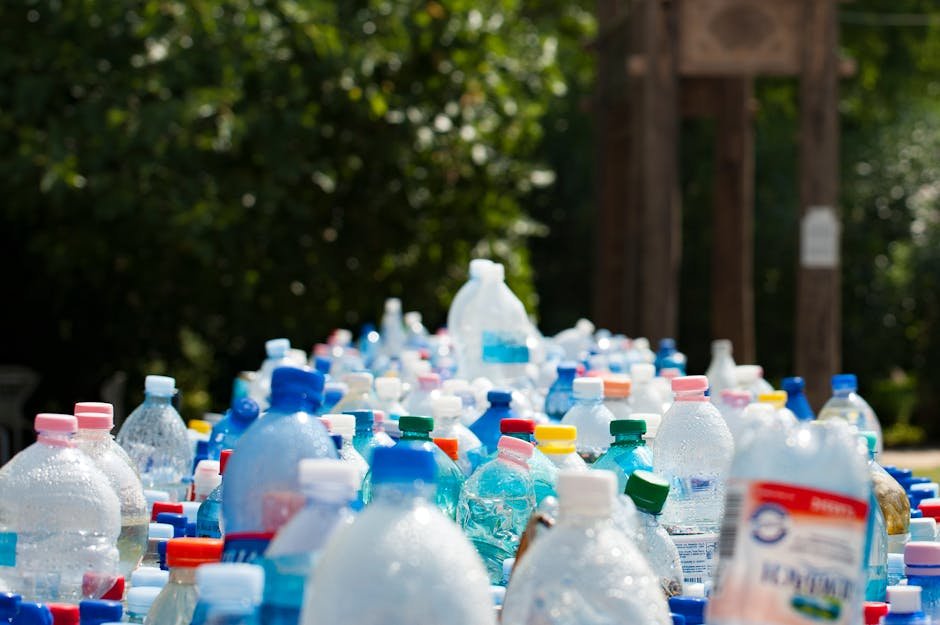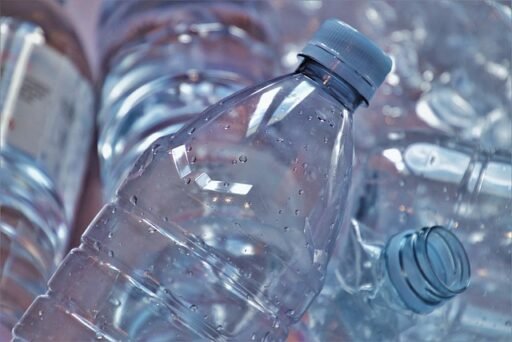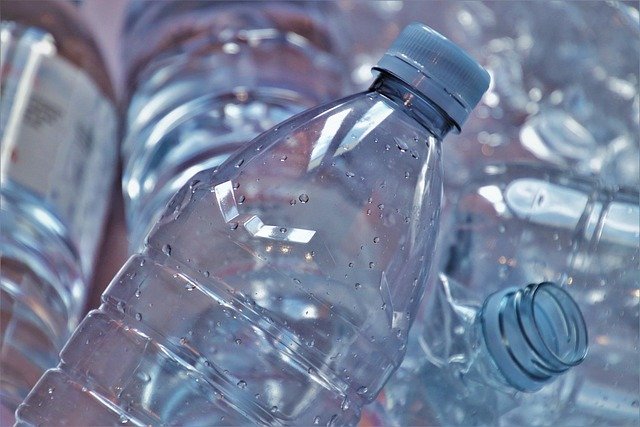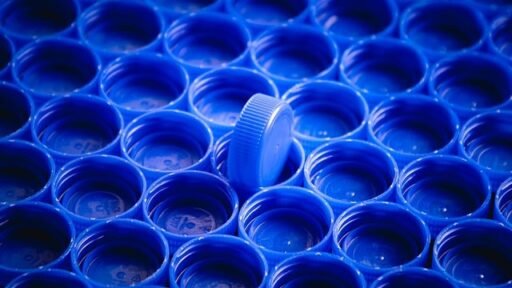-
Table of Contents
- Understanding the Current State of Plastic Abrasive Processes
- Enhancing Abrasive Media Composition
- Optimizing Abrasive Delivery Systems
- Enhancing Surface Analysis and Quality Control
- Addressing Environmental Concerns
- Leveraging Data Analytics and Machine Learning
- Exploring Novel Applications
- Fostering Collaboration and Knowledge Sharing
- Conclusion
The plastic abrasive process has become an integral part of various industries, from manufacturing to surface finishing. As young professionals in their 20s and 30s enter these fields, they’re increasingly confronted with the challenge of improving this essential technique. This article delves into the intricacies of the plastic abrasive process and explores innovative ways to enhance its efficiency, sustainability, and overall performance.
To understand how the plastic abrasive process can be improved, it’s crucial to first grasp its fundamental principles and current applications. Plastic abrasives are synthetic materials designed to remove surface layers, polish, or clean various substrates. Unlike traditional abrasives made from minerals or metals, plastic abrasives offer unique advantages such as reduced substrate damage, consistent performance, and the ability to be customized for specific applications.
Understanding the Current State of Plastic Abrasive Processes

The plastic abrasive process has come a long way since its inception. Today, it’s used across a wide range of industries, including automotive, aerospace, electronics, and medical device manufacturing. The process involves propelling plastic abrasive media against a surface using compressed air or mechanical means. As the abrasive particles impact the surface, they remove contaminants, smooth rough areas, or create desired surface finishes.
Despite its widespread use, the plastic abrasive process still faces several challenges. These include inconsistent results, environmental concerns, and the need for more efficient and cost-effective solutions. As young professionals enter the workforce, they bring fresh perspectives and innovative ideas to address these issues.
Enhancing Abrasive Media Composition
One of the most promising areas for improvement in the plastic abrasive process lies in the composition of the abrasive media itself. Traditional plastic abrasives are often made from materials like urea, melamine, or acrylic. While these materials have served the industry well, there’s room for innovation in developing more effective and environmentally friendly alternatives.
Recent research has focused on incorporating biodegradable materials into plastic abrasives. This approach not only addresses environmental concerns but also opens up new possibilities for performance enhancement. For instance, abrasives made from plant-based polymers have shown promising results in terms of durability and cutting efficiency.
Another avenue for improvement is the development of smart abrasive materials. These advanced composites can be designed to respond to specific environmental conditions or substrate properties. For example, temperature-sensitive abrasives could adjust their hardness or shape in response to heat generated during the abrasion process, ensuring optimal performance throughout the operation.
Optimizing Abrasive Delivery Systems
The effectiveness of the plastic abrasive process is heavily dependent on the system used to deliver the abrasive media to the target surface. Traditional delivery systems often suffer from inconsistent abrasive distribution and poor energy efficiency. Improving these systems can lead to significant enhancements in process performance and cost-effectiveness.
One promising approach is the development of precision-controlled delivery systems. By leveraging advanced sensors and real-time monitoring technologies, these systems can adjust abrasive flow rates and impact velocities based on the specific requirements of each application. This level of control ensures consistent results while minimizing waste and energy consumption.
Another area ripe for innovation is the integration of robotics and automation into abrasive delivery systems. Robotic systems can achieve levels of precision and repeatability that are difficult to match with manual operations. By combining robotic manipulation with advanced path planning algorithms, it’s possible to optimize the abrasive process for complex geometries and hard-to-reach areas.
Enhancing Surface Analysis and Quality Control
To truly improve the plastic abrasive process, it’s essential to have accurate and reliable methods for assessing surface quality before, during, and after treatment. Traditional quality control methods often rely on visual inspection or basic surface roughness measurements, which may not capture the full range of surface characteristics relevant to a given application.
Advancements in surface analysis technologies offer exciting opportunities for improvement in this area. For instance, 3D surface mapping techniques can provide detailed information about surface topography, allowing for more precise control of the abrasive process. Similarly, spectroscopic methods can be used to analyze surface composition, ensuring that contaminants are effectively removed without damaging the underlying substrate.
Real-time monitoring systems represent another frontier in improving the plastic abrasive process. By continuously analyzing surface properties during the abrasion process, these systems can provide immediate feedback to adjust process parameters. This closed-loop approach ensures optimal results while minimizing the risk of over-processing or under-processing.
Addressing Environmental Concerns
As environmental awareness continues to grow, particularly among younger generations, improving the sustainability of the plastic abrasive process becomes increasingly important. This involves not only developing more eco-friendly abrasive materials but also optimizing the entire process to minimize waste and energy consumption.
One approach to enhancing sustainability is the development of closed-loop recycling systems for plastic abrasives. By recovering and reprocessing used abrasive media, it’s possible to significantly reduce waste and raw material consumption. Advanced separation and cleaning technologies can ensure that recycled abrasives maintain their performance characteristics over multiple use cycles.
Energy efficiency is another critical area for improvement. Traditional abrasive systems often consume large amounts of compressed air or electrical power. By optimizing system designs and incorporating energy recovery technologies, it’s possible to significantly reduce the carbon footprint of the abrasive process. For example, regenerative blasting systems can capture and reuse the kinetic energy of rebounding abrasive particles, improving overall energy efficiency.
Leveraging Data Analytics and Machine Learning
The rise of Industry 4.0 technologies presents exciting opportunities for improving the plastic abrasive process. By harnessing the power of data analytics and machine learning, it’s possible to optimize process parameters, predict maintenance needs, and ensure consistent quality across large-scale operations.
Machine learning algorithms can analyze vast amounts of process data to identify patterns and relationships that may not be apparent to human operators. This can lead to insights that drive process improvements, such as identifying optimal abrasive media compositions for specific substrates or predicting the ideal process parameters for achieving desired surface finishes.
Predictive maintenance is another area where data analytics can make a significant impact. By monitoring equipment performance and analyzing historical data, it’s possible to predict when maintenance will be required before failures occur. This proactive approach can reduce downtime, extend equipment life, and improve overall process efficiency.
Exploring Novel Applications
As the plastic abrasive process continues to evolve, new applications are emerging that push the boundaries of what’s possible with this technology. Young professionals entering the field have the opportunity to explore these novel applications and drive innovation in unexpected directions.
One exciting area of development is the use of plastic abrasives in additive manufacturing processes. By combining 3D printing technologies with precision abrasive finishing, it’s possible to create complex parts with highly controlled surface properties. This approach opens up new possibilities in fields such as aerospace and medical device manufacturing, where surface finish plays a critical role in component performance.
Another emerging application is the use of plastic abrasives in surface functionalization. By carefully controlling the abrasive process, it’s possible to create specific surface textures or patterns that enhance properties such as adhesion, wettability, or light reflection. This approach has potential applications in fields ranging from electronics to biomedical engineering.
Fostering Collaboration and Knowledge Sharing
Improving the plastic abrasive process is not just a technical challenge; it also requires fostering a culture of innovation and collaboration within the industry. Young professionals have a unique opportunity to drive this change by embracing open innovation principles and leveraging digital platforms for knowledge sharing.
Online communities and forums dedicated to abrasive technologies can serve as valuable resources for sharing best practices, discussing challenges, and collaborating on solutions. By actively participating in these communities, professionals can stay up-to-date with the latest developments in the field and contribute their own insights and experiences.
Collaborative research initiatives between industry and academia also play a crucial role in driving innovation in the plastic abrasive process. These partnerships can bring together diverse expertise and resources to tackle complex challenges and explore new frontiers in abrasive technology.
Conclusion
The plastic abrasive process has come a long way since its inception, but there’s still significant room for improvement. As young professionals in their 20s and 30s enter the field, they bring fresh perspectives and innovative ideas that can drive the next wave of advancements in this critical technology.
By focusing on areas such as abrasive media composition, delivery systems, surface analysis, environmental sustainability, data analytics, and novel applications, it’s possible to enhance the efficiency, effectiveness, and versatility of the plastic abrasive process. These improvements will not only benefit existing industries but also open up new possibilities for advanced manufacturing and surface engineering.
As we look to the future, it’s clear that the continued evolution of the plastic abrasive process will rely on a combination of technological innovation and collaborative effort. By embracing these challenges and opportunities, young professionals can play a pivotal role in shaping the future of this essential technology, driving improvements that will benefit industries and society as a whole.
The journey to improve the plastic abrasive process is ongoing, and each step forward brings new insights and possibilities. As we continue to push the boundaries of what’s possible with this technology, we can look forward to a future where plastic abrasives play an even more crucial role in creating the advanced materials and products that will shape our world.





